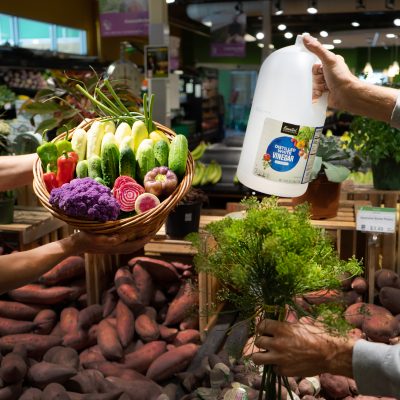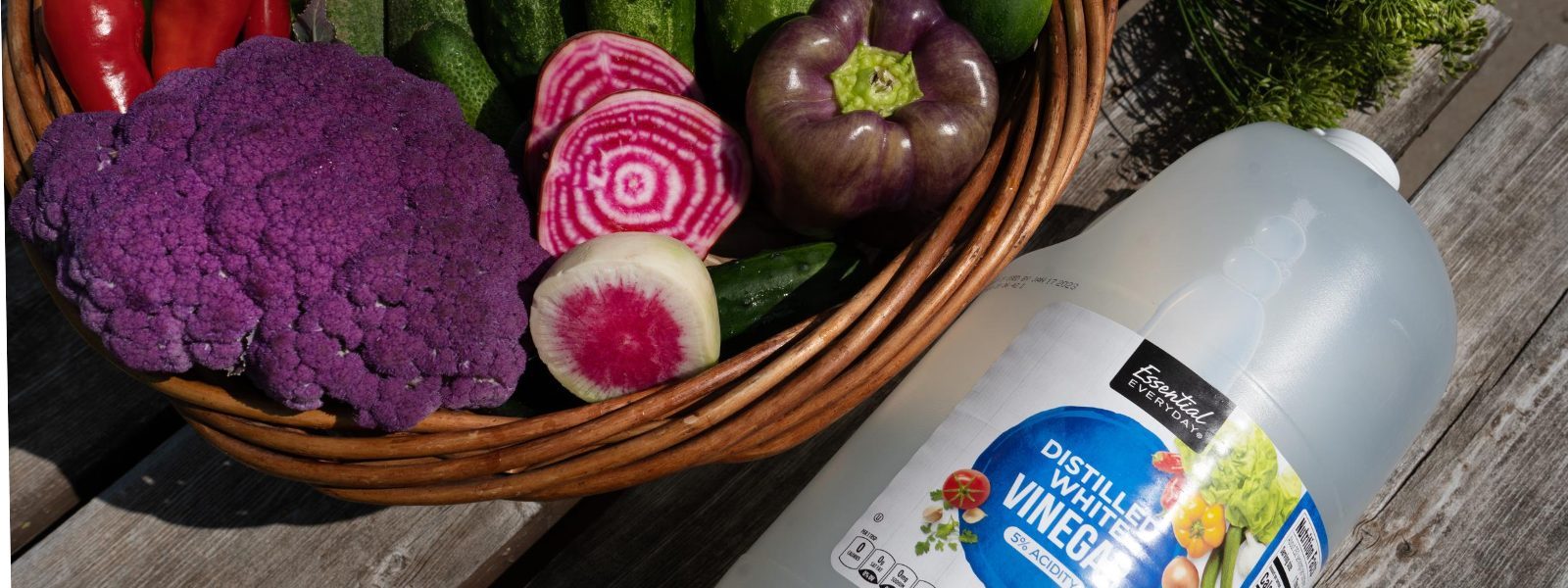Our produce department is full of tasty selections perfect for pickling like jalapeños and pickling cucumbers from Sin Fronteras Farm & Food or other delicious produce that is currently in season from local Community Foods farms like Wisconsin Growers Cooperative and St. Croix Valley. Maximize the life and enjoyment of some your favorite seasonal produce by persevering them. Stretch your dollar with Essential Everyday vinegar!
Pickling can be just that—a pickle. Pickling involves a fermentation process requiring canning equipment, sterilization procedures and some patience. While the process may be long the pay off of tasty ferments can be rewarding. Whether you are looking to experiment with flavors in the kitchen or maximize the life of your bounty we have some tips to help through the process.
Allow us to introduce quick pickling for those of you not ready to go all in. Where science meets cool foodie niche.
 1. Pick your pickle
1. Pick your pickle
Although cucumbers are the most common for pickling, you can pickle almost any vegetable such as baby carrots (not the bitty mature carrots which you find in packages, but miniature immature ones with the skin still on), shallots, onion, asparagus, cauliflower, green beans, zucchini, okra, and beyond. The fresher and crispier the produce, the better the final product.
2. Prep the potion
The main ingredient in pickle brine is vinegar. White vinegar is most common, but you can also use cider vinegar or wine vinegar, just not balsamic because it’s too syrupy. Combine 1 cup vinegar with 1/2 cup water.
Add a few pinches of salt. Salt draws moisture out of the vegetables, and encourages the growth of useful bacteria.
Finally, spice it up. This is where it gets fun. Many “pickling spice” blends are available and work beautifully, but warning, we might judge you for being boring (JK!). Consider a visit to the bulk aisle at your local food co-op, and try making your own blend with mustard seed, dill seed, dry coriander seed, red pepper flakes, bay leaf, black peppercorns or garlic.
Combine all the ingredients in a saucepan, stir to dissolve, and bring to a boil.
Try This: Instead of diluting the vinegar with water, try including a 1/2 cup of white or brown sugar with a dash of cinnamon. Engage those senses!
3. Prep your veggies
Trim off any inedible pieces of your vegetable (e.g., the ends of green beans or root ends of onions). If you’re cutting your vegetables into pieces, make sure they’re all about the same size for pickling consistency.
4. Submerge and chill
Place your vegetables in a clean, dry container. Glass jars are the best because they won’t absorb any odors from the pickles (here’s to reuse!) and they’re oh-so lovely. Pour the boiling brine into the jar and submerge the veggies completely (you can add water to bring up the level if needed). Refrigerate for at least one hour and let the brine work its charms. The longer you brine, the tastier the pickle.
Depending on your veggie, quick pickles keep in the fridge for weeks, if not months, meaning constant crunchy snacks galore.
Recipe courtesy of Co+op, Welcome to the Table
